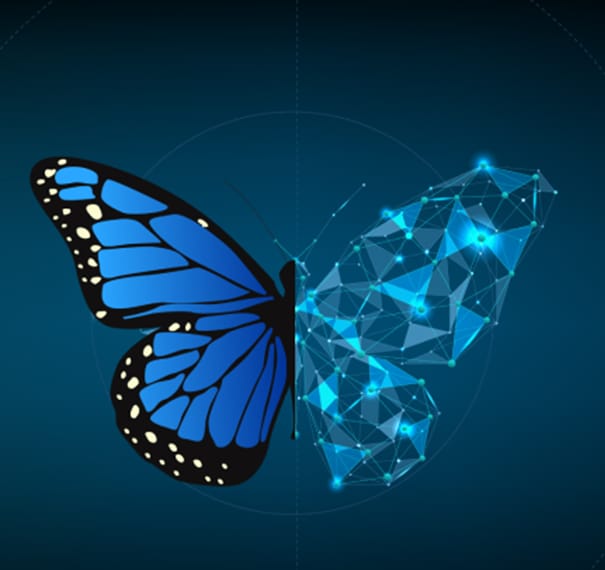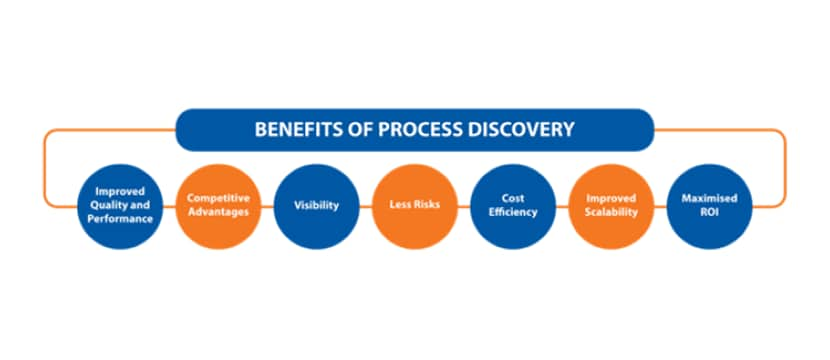
Prashant Vaishnav
AVP – Senior Director – Sales,
EdgeVerve Systems Ltd
(An Infosys Company)

Prashant Vaishnav
AVP – Senior Director – Sales,
EdgeVerve Systems Ltd (An Infosys Company)

Summary
Large organizations often face challenges while rolling out large transformation programs. These challenges range from the technological capability to skill to motivation. How should CXOs navigate this issue? This article takes you through a three-step guide to a successful transformation program.
As the world accepts the new normal, enterprise digital transformation programs are finding more ground among organizations than ever before.
According to a Deloitte survey, 85% of the surveyed CEOs indicated that their organizations had significantly accelerated digital transformation during the pandemic, which also fostered the formation of new partnerships and alliances.
The market is demanding to be more digitally agile and create superior customer experiences. Towards this end, the de-facto standard that the industry has adapted is improved and faster automation.
As Digital helps the world face the new normal, the path to attain transformation is not easy. It is dotted with various challenges, such as skills shortage, lack of a well-defined transformation strategy, employee and CXO digital mindset, and data security to name a few. In our experience in executing large transformation programs for some of the marquee clients, we believe that the following framework should help the CXOs develop and deliver the transformation programs at scale and establish future-ready enterprises.

The right strategy has the potential to transform the enterprise for good:
Automation and transformation go hand in hand. With the pandemic driving the transformation projects in hyperspeed, the CXOs find automation being in the front seat. The priorities while devising an automation strategy are very clear, at the minimum the leaders expect the automation strategy to:
-
Drive value to the customer
-
Bolster the topline and bottom line
-
Enhance employee productivity and experience
According to this Deloitte article, only 38% of the survey respondents who are implementing and scaling have an enterprise-wide intelligent automation strategy. Transformation and automation significantly impacts and improves the KPIs for an enterprise. So what are the processes viable for automation? How would the initial use cases be picked?
In our opinion, it is important to identify and prioritize the process keeping in mind the above-mentioned goals. If not prioritized appropriately, the executives may not realize the all-important ‘ROI’.
We suggest, the ‘3E framework’ which could help enterprises develop an efficient automation strategy –
-
Evaluate the value chain: Evaluating the processes that have a direct impact on customers, employees, vendors, partners should be step one. Bringing in any form of efficiency or experience improvement almost always leads to better business outcomes.
-
Eliminate manual intervention: It is good to examine ways in which manual intervention can be reduced or removed. If people’s time can be released to do their core tasks instead of manual system-related tasks, the strategy would reap immense benefits.
-
Evolve with the technology: There could be many legacy processes that might need a technology upgrade. It will help if these processes are assessed for evolution keeping in mind the newfangled technologies such as AI, Deep learning, etc.
The right discovery
The rapid digital adoption across the departments of any organization has not only increased the amount of data that is generated but also increased the amount of redundant processes. While evaluating or deploying the automation strategy, making the right discovery is the first step. Process discovery can be defined as a set of tools and techniques that are used to define, map and analyze the processes of an organization.

According to the experts quoted in our research paper, up to 50% of the RPA projects fail due to the following factors:
-
Challenges in identifying the right process for automation
-
Automating the process based on SME knowledge and manual documentation only
-
Low quality of data capture – process fragmentation and inconsistencies
-
Bots do not capture the complexity of processes
-
Understanding of exceptions is obtained at a later stage
There are generally 3 stages of process discovery – Data capture, Process Mining, and Process mapping. The automation process discovery should ideally start small and then scale up, to gain early experience. If your organization has continuous improvement teams then it is advised to leverage them in the process.
So what are the benefits of process discovery? Well, there are many!.

Tools such as ‘AssistEdge Discover’ help enterprise leaders extract business value from rather mundane and boring business processes. The discovery stage lays a robust foundation to build a culture of continuous improvement while creating a hyper-productive enterprise. It acts as a powerful foundation for enterprises seeking cutting-edge technology, to drive intelligent automation and process excellence.
Digital Mindset is critical for transformation
According to this article by Forrester, “In 2021, up to 30% of organizations will ramp up their focus on quality by better planning and testing their automation before deploying it in production or exposing it to employees.” It is important that the transformation leaders adopt a bottom-up approach while executing the strategy.
We have been in this industry for over 2 decades and oftentimes we have seen that customers and colleagues relate the term ‘automation’ to just process automation. However, as demonstrated above it is and must be much more than that. We believe if the following prerequisites are met, the automation strategy could prove to be significantly beneficial.
First, the employees of the organization should feel that automation will not only empower them but will also make their job easy. It is advised that the transformation leaders of the organization hold clear, transparent, and frequent conversations with the employees to empathetically educate them and assure them of the advantages and disadvantages of the transformation program.
Second, leadership buy-in is important and critical for the success of the program. The sheer scale of the program will require the support and collaboration of various departments of the company and consider transformation metrics as part of the unit/leadership scorecard. Therefore, the more the leaders understand the need and benefits, the more chances of the program being a stupendous success.
Finally, aligning the automation program to the overall organizational strategy of digital transformation helps.
Some of our client successes
For a global healthcare technology company based in Europe, we have partnered with them on a multi-year transformation and automation program. We first helped them design a framework for transformation similar to the 3E framework mentioned above, and then partnered with them to drive end-to-end global process standardizations that would be automated, as opposed to picking up individual automation in pockets. We also helped them set up a global 4-tiered steering and governance mechanism for identification, prioritization, and execution of the automation use cases, with sponsorship being driven right from the CFO level. EdgeVerve’s AssistEdge RPA was used as the automation platform of choice. Our client was able to save over 1 Million Hours of manual effort and realize more than EUR 25 M in savings over 5 years with 110% ROI.
For a US-based global provider of risk management products and services, we helped them quickly and seamlessly move to work-from-home during the initial days of the pandemic, while simultaneously not only maintaining but enhancing their customer service experience. Again, the key ingredients for success here were the right framework for process discovery and prioritization, choosing the right technology solution, and driving change with sponsorship at the right levels. We were able to help the client reduce their average call time by nearly two-thirds and achieve a 15% improvement in the first-call resolution for the customers.
Conclusion:
You can bring the horse to the water, but you cannot make it drink it. Can you? Driving transformation and intelligent automation in large enterprises is all about the right discovery and precise execution to derive the right ROI. You cannot see the results that you need if you do not have the right processes, collaborative partners, and trustworthy employees, and most importantly – willingness to change!
Loved what you read?
Get 10 practical thought leadership articles on AI and Automation delivered to your inbox


Loved what you read?
Get 10 practical thought leadership articles on AI and Automation delivered to your inbox
References:
- https://www2.deloitte.com/us/en/insights/industry/technology/focus-areas-to-accelerate-digital-transformation.html
- https://www2.deloitte.com/bg/en/pages/about-deloitte/articles/Intelligent-Automation-Survey-2021.html
- https://www.edgeverve.com/wp-content/uploads/2019/03/SSON-EdgeVerves-Report-On-Process-Discovery.pdf
- https://www.forrester.com/blogs/predictions-2021-automation-becomes-a-business-imperative/





